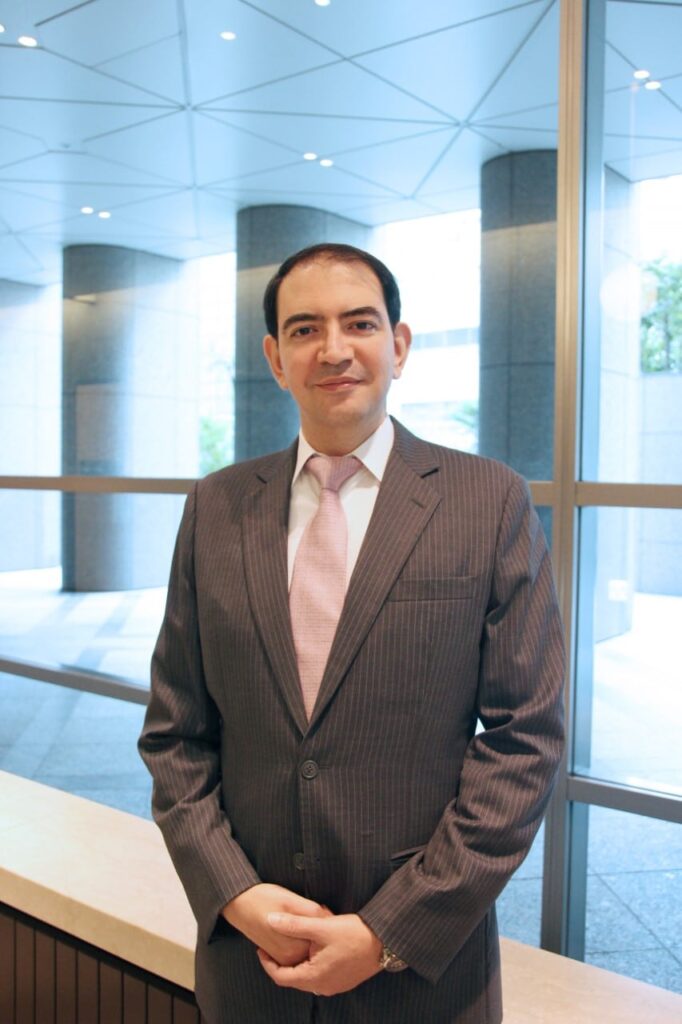Swimming in the Dark: The Rising Tide of Alternative Liquidity in APAC
12.20.2022
With Firas Hadj-Taieb, Global Co-Head of Quant Trading Strategy for GES, Nomura
In today’s dynamic and changing trading environment, there remains one constant objective: to continuously seek improvement of execution performance for investors.

Mature algorithmic trading strategies and technology that leverages machine learning and artificial intelligence is more democratized, so predicting fair value and volumes, and optimizing the pace of order management are more nuanced than ever. Execution providers must invest in technology and conduct continuous, data-intensive research, to ensure that the triad of ‘Price, Volume, and Time’, and the way algos address that triad, is perpetually reviewed and adapted.
Nomura and Instinet, however, working together under an umbrella they call Global Execution Services (GES), believe that the market should focus on a quartet now, rather than a triad.
They say there is a fourth key factor to add to the equation: Venue Analysis. How do each of the venues execute, how do their platforms and participants behave, and what are the best ways to interact with those venues on a very specific ‘case-by-case basis’? Whilst the APAC region does not have the vast, potentially confusing array of alternative venues and fragmentation found in other regions, Nomura and Instinet tell GlobalTrading that they have seen a marked rise in lit and dark pool trading in the region, especially in Japan, Australia, and Hong Kong. While each market has its own story to tell, and is evolving at its own pace, there are some common themes.
The following Q&A with Firas Hadj-Taieb, Global Co-Head of Quant Trading Strategy & Research for the GES team at Nomura, examines this trend in more detail.
Let’s start with the basics:
Why do traders interact in dark pools? And what is the optimal way of interacting with that alternative liquidity?
Historically, dark pools have been marketed as venues where the order book is invisible, so they are useful for not signaling a trader’s intentions, thus reducing the risks of trading impact on the stock price, and helping realize spread savings by executing at the midpoint. Most dark pools match within the bid / ask of the primary exchange, as a general rule. Each pool, whether broker or exchange owned, must publish their governance and operations rulebooks, so this information is available.
For the suite of APAC venues operated by Nomura and Instinet1, our governance principles focus on offering a better experience, unique liquidity, and an alternative to the primary exchange. Each market handles the management of counterparty types slightly differently, in response to the local market microstructure and other factors. In Japan, specifically, that translates into a proprietary methodology we use in NX Pool to measure the liquidity quality, looking at the ‘price trajectory’, sometimes called ‘mark outs’ or ‘reversion’, around a match in the pool. The goal is to ensure that only high-quality liquidity is retained, so any liquidity providers that consistently fail to pass our quality analysis are excluded. We’ve operated this process for several years, which has led to our dark pool in Japan becoming the leader, with an estimated 35%2 market share in September 2022.
How might dark pool liquidity impact an order’s performance?
Since a trade executed in a dark pool generally reduces the risk of trading impact, one can easily make the connection that a trader using a liquidity-seeking or arrival price algo can gain better arrival price performance, even with higher fill rates, or block size.
But, dark pool performance is not so obvious for VWAP executions, which in APAC tend to happen on the passive side. If we analyze passive executions statistically, we see an unfavorable stock price movement immediately after the execution. If an order is the last one in the queue, buying at the BID at that time is like buying at ASK at time t +ε. If the VWAP ‘passive maker’ tends to get fills like this, the performance will be negatively impacted. Passive order management in the lit venues means a trader is showing a series of orders to all other participants over a prolonged period. This phenomenon can be reduced by more optimal order placement, capturing volatility around the tick but it cannot be eliminated against unpredictable large orders that take all the level.
This is why a dark pool’s governance and quality matter. If a pool guarantees that all trades, on average, in that dark pool are higher quality than that of passive execution on the main market, the fills at mid are true mid, and not transient. That can be enforced with, as we do in NX Pool, a ‘walk-up’ protection on counterparty interactions.
And as we said, since the mid is calculated from the bid /ask on the primary, any sudden spread widening could make the midpoint execution become an aggressive execution. By using a combination of mid pegging instructions and an intelligent price limit structure, we can seek to avoid temporary midpoint executions that result in aggressive executions if we look at t +ε.
Our liquidity analysis shows a consistent trend where dark pool fills exhibit a lower price reversion than passive executions on the main market. We allow some time to elapse (5 minutes) before measuring, to remove transient impact effects. Our data shows that the dark maker tactics are having a mid to mid return of around 1bps, whilst the main market maker shows a passive to passive return around 1bp + 1/2 of the spread.
So, in summary: Does dark pool trading improve performance in APAC?
The answer is yes, but a few conditions are necessary to make that happen:
- High quality liquidity in dark pools can only be achieved by strict governance and robust infrastructure that manages participants. Traders should take the time to understand how each venue they interact with manages this process.
- Intelligent posting, as described above, should be used for each pool to avoid transience and only capture true midpoints.
- Use advanced trading algorithms that include logic focused on the “Quartet”: Price / Volume / Time, and each Venue.
- Be sure you and your execution providers understand the market microstructure, and adapt to the market specifics in each region.
- Make sure your execution providers are continuously investing in quant analysis, technology and their platforms, to anticipate the ever-evolving transformation and paradigms shifts in the markets.
What do you think will be coming next in the APAC region, with regard to dark liquidity?
The Asia Pacific region’s microstructure is reaching a catalytic point. We see more uptake and use of conditional orders. It’s clear that the trading community is becoming more hyper focused on the risks of signalling and price impact.
As this trend evolves, and we prepare for the APAC launch of our global, award-winning conditional order management platform: Instinet BlockCross®, interacting optimally in the dark and routing to high-quality venues will be even more important.
These new best practices can be measured and incorporated into trader workflows today. We’re excited to share more about these critical, yet achievable strategies with our clients over the next few months.
——————-
(1) Nomura operates NX Pool in Japan, and Instinet Operates BlockMatch Asia (trading securities in Hong Kong and ASEAN markets), and Instinet BLX Australia.
(2) Japan Dark Pool Market Share: NX volume compared to ToSTNeT volume for single stock trades, between 9:00~11:30 or 12:30~15:00 and below JPY 30mil





